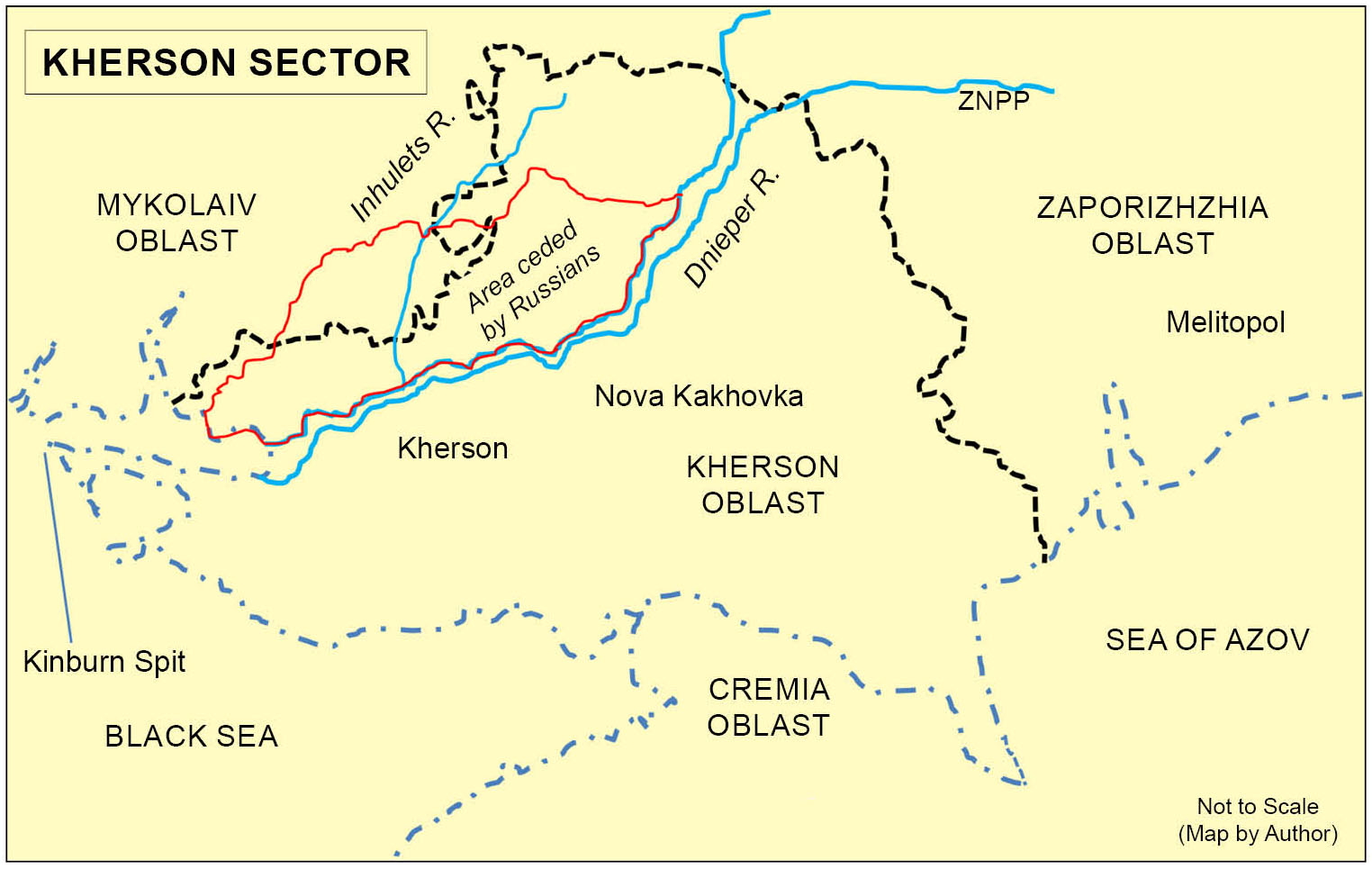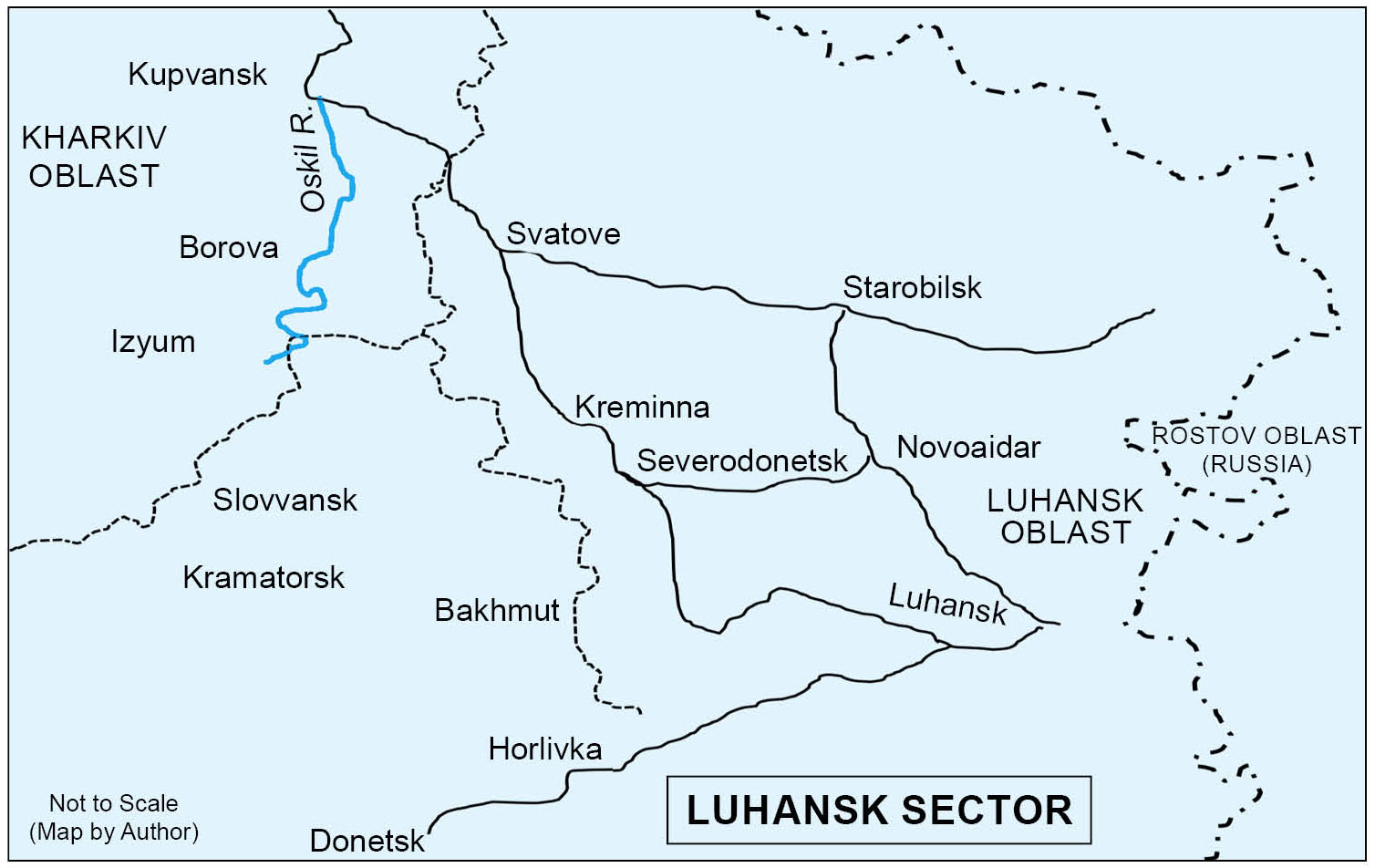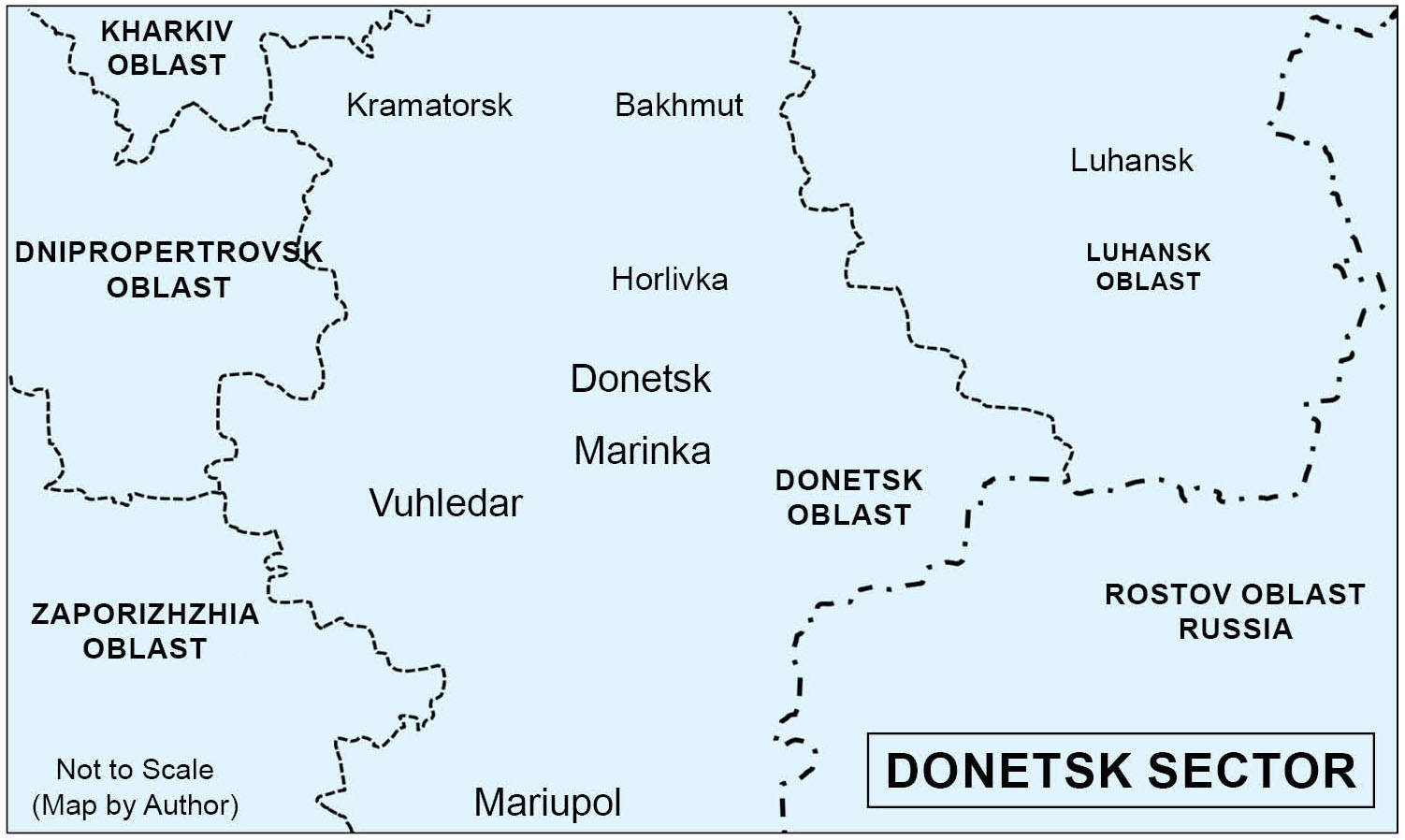IDR Blog
Ukraine War: Russia’s Winter Strategy or Admission of Defeat
Russia-Ukraine war has entered inthe tenth month with no signs of abating. In the first week of April this year, after battling for almost five weeks on a distant northern axis, Russia withdrewits forces from the suburbs of Kyiv and border cities of Chernihiv and Sumy. Riding on the initial momentum, Russian forces managed to penetrate deep into theSouthern Ukraine capturing large swathes of territory in Zaporizhzhia, Kherson and Mykolaiv oblasts and most of the coastline along the Sea of Azov andBlack Sea.In the Donbas region, despite the presence of Luhansk People’s Republic and Donetsk People’s Republic rebel forcesand a sizeable estateunder their control before the war, the progress of offensivewas bitterly contested by the Ukrainians. Nevertheless, the Russian army could capture Luhansk oblast in July along with some key areas in the neighboring Kharkiv and Donetsk oblasts. Port city of Mariupol in Donetsk oblast fell after a stiff resistance of 85 days.
The Ukrainian army during their August-September offensive pushed back Russians from the Kharkiv oblast. Locations like Chuhuiv, Izyum and Kupyansk through which many ground line of communication (GLOC) from not only Kharkiv but also from Belgorod (Russia) connected Donbas region fell to Ukraine. Withdrawing Russians took temporary positions on eastern banks of River Oskil and were soon pushed back inside the Luhansk oblast. Ukraine claimed to have liberated 6,000 square kilometer territory from the Russian occupation in this swift riposte.
The battle lines were redrawn from Luhansk in the east to Mykolaivin the south and many battles ensued along the front, claiming heavy toll on men and material. On the southern thrust Russians, who were already knocking at the doors of the capital city of Mykolaiv had set their eyes on the port city of Odessa. The larger aim was perhaps to ‘assimilate’ Transnistiria, a sliver of 4,100 square kilometer Moldovan territory between the eastern bank of River Dniester and Moldova-Ukraine border, where Russia already has militarypresence.
As the battle lines lengthened and the Ukrainian resolve stiffened, Russian army started to incur losses, more what it could replenish from its war reserves. Ukraine did not go unscathed either. The southern axis aiming to reach Odessa floundered for want of war efforts. Russia reprioritized the axes, assigning importance to Donbas and Zaporizhzhia sectors.
The ‘special military operations’ announced by President Vladimir Putin were intended to wrap up the war on a winning note by annexing Donbas region and showcase the victory at the V Day parade at Red Square on 9 May, which Russian generals could not accomplish. Many commanders leading the campaign were replaced for not meeting the expectations. In a bid by the Kremlin and defense ministry to put the campaign back on track on 8 October, President Putin appointed General Sergey Surovikin, the commander of the Army Group South as the overall commander of Russian forces in Ukraine. At the time of his appointment, Kherson sector was facing a potentially dangerous situation. The Ukrainian forces were closing in on to Kherson, Beryslav and other settlements on the west bank of River Dnieper. Bulk of the Russian forces faced the danger of entrapment between Inhulets and Dnieper rivers. Maintenance of the forces had become a daunting task due to the precision strikes on the crossing places over Dnieper by Ukraine. Soon after Surovikin’s appointment, the civilian population from Kherson and other population centres was ordered to evacuate towards south. On 9 November, Surovikin and Defense Minister Sergei Shoigu announced a retreat of forces from the west bank of Dnieper River. Is it a Russian winter strategy or simply a realization of Kremlin’s military over ambition, which has been demonstrated in Kyiv and Kharkiv earlier? It is to the credit of Sergey Surovikin to have convinced President Putin with his military pragmatism. Whatever is the fallout – military or political; shrinking of the war front was an imperative to break free from a running fight with the enemy, minimize losses and consolidate on the ground of own choosing.
In a matter of days Ukrainian forces marched into Kherson and the entire west bank unopposed. On 14 November, Ukrainian President Volodymyr Zelensky, who normally avoids visiting frontlines, was in Kherson, asking for a slice of watermelon, the fruit for which the region is famous for.
 Negative fallout of withdrawal for the Russian troops has been that the Ukrainian forces are shelling the very locations where they intend to take defensive positions for the winter. They are compelled to relocate their logistics echelons further east and south towards Zaporizhzhia and Crimea border respectively. Similarly, areas around Melitopol and GLOCs passing through it are being interdicted from the north.Russia has reportedly relocated a large number of troops in Novoaidar (Luhansk oblast) to stablise critical situations there.
Negative fallout of withdrawal for the Russian troops has been that the Ukrainian forces are shelling the very locations where they intend to take defensive positions for the winter. They are compelled to relocate their logistics echelons further east and south towards Zaporizhzhia and Crimea border respectively. Similarly, areas around Melitopol and GLOCs passing through it are being interdicted from the north.Russia has reportedly relocated a large number of troops in Novoaidar (Luhansk oblast) to stablise critical situations there.
In this sub-sector, Zaporizhzhia Nuclear Power Plant (ZNPP) is located on the southern banks of Dnieper. Artillery duels in and around ZNPP have been a cause for concern for the International Atomic Energy Agency and international community.In retaliation, Russian artillery is pounding Kherson, Nikolopol, Zaporizhzhia, Dnipro and other population centres. Apart from the tactical engagements, acquiescing Kherson has a larger strategic implication. Ukraine may attempt crossing Dnieper from the east and north at multiple places and develop operations to threaten Melitopol and GLOC leading to Crimea. Dnieper delta affords an opportunity for Ukraine to get closer to Crimean s peninsulato observe and launch seaborne special operations. With Zmiinyi Island (Snake Island) in the Black Sea and Kilburn Spit at the mouth of Dnieper under its control Ukraine would train it sights on Crimea. How would Russia respond to a potential threat building up towards Crimea?
 In Luhansk sector, the Ukrainian forces are attacking in the direction of Svatoveand Kreminna. Regular skirmishes are taking place at the settlements located northwest of Svatove. Ukraine is trying to breach the R66 highway between Svatove and Kreminna to threaten Starobilsk and Severodonetsk. Breakthrough between Svatove and Kreminna would effectively sever Luhansk oblast into two, reducing the territorial gains by Russia in this war to naught. Though the Russian forces are defending both the locations and GLOC stoutly, they apparently lack adequate forces to drive the enemy to the west of Oskil River. AtKreminna, Ukranian forces have closed in and attacking from the north and southwest. Russian forces are preparing defences in this sector to thwart any Ukrainian advance during the winters. Battles in Luhansk sector are being fought in conjunction with the battles in the neighbouring Donetsk.
In Luhansk sector, the Ukrainian forces are attacking in the direction of Svatoveand Kreminna. Regular skirmishes are taking place at the settlements located northwest of Svatove. Ukraine is trying to breach the R66 highway between Svatove and Kreminna to threaten Starobilsk and Severodonetsk. Breakthrough between Svatove and Kreminna would effectively sever Luhansk oblast into two, reducing the territorial gains by Russia in this war to naught. Though the Russian forces are defending both the locations and GLOC stoutly, they apparently lack adequate forces to drive the enemy to the west of Oskil River. AtKreminna, Ukranian forces have closed in and attacking from the north and southwest. Russian forces are preparing defences in this sector to thwart any Ukrainian advance during the winters. Battles in Luhansk sector are being fought in conjunction with the battles in the neighbouring Donetsk.
 In Donetsk sector, the Russian forces have maintained an offensive posture. They are attacking the settlements around Bakhmut, a meeting point of many GLOCs. Russian attacks in the northeast, southwest and south of Bakhmuthave met with success and Ukrainian forces are busy repelling the attacks. Opytne, a settlement south of Bakhmut has changed hands many times. Russian operations around Bakhmut are proving costly in terms of manpower and resources. Fighting is also raging in the west of Donetsk city and Marinka. As compared to other sectors, this sector is most active, because of the apparent danger of losing the city of Donetsk, capital of the oblast and any incursion further south would make port city of Mariupol vulnerable. In this sector too, Russians are preparing defensive lines to limit territorial losses.
In Donetsk sector, the Russian forces have maintained an offensive posture. They are attacking the settlements around Bakhmut, a meeting point of many GLOCs. Russian attacks in the northeast, southwest and south of Bakhmuthave met with success and Ukrainian forces are busy repelling the attacks. Opytne, a settlement south of Bakhmut has changed hands many times. Russian operations around Bakhmut are proving costly in terms of manpower and resources. Fighting is also raging in the west of Donetsk city and Marinka. As compared to other sectors, this sector is most active, because of the apparent danger of losing the city of Donetsk, capital of the oblast and any incursion further south would make port city of Mariupol vulnerable. In this sector too, Russians are preparing defensive lines to limit territorial losses.
Weather has always played a decisive role in all military campaigns that passed through or were fought in Ukraine. The autumn, winter or spring is not the ideal campaigning seasons. The Russian offensive during March-May found the ground impassable and the rivers and streams in full spate due to the melting snow. Mechanised columns moving cross country often got stuck in the Rasputitsa (Marshal mud) presenting an easy target to the Ukraine army tank-hunting teams armed with man-portable anti-tank guided missiles. The armed drones too wreaked havoc on such hapless vehicle columns. Tank commanders who chose to advance along the roads met the same fate in the built-up areas. Ground conditions during autumn (September-November) are though less punishing than spring but still unfavorable for maneuver due to the rains. Severe winter months (December-January) when the ground and small rivers are frozen operations can be undertaken provided the troops are conditioned and logistics are taken care of. A lull in the battle during the winter and spring is unexpected from the Ukrainian army, which is riding on the on the recent successes. To deny Russians much needed respite it will press home attack all along the front. Both sides are likely to improve their defensive posture by capturing important features and GLOC and prepare launch pads for large scale manoeuvres during September-November.
In Russia-Ukraine war, the invincibility of Russian armed forces has been dented badly. The army, navy, air force and special forces have all performed sub-optimally. Russian juggernaut which could have brought this war to a quick favorable conclusion is far from over and dangerously poised towards a possible debacle. There has been unacceptable level of casualties on both sides. Winters have brought much needed interlude for the Russians to regroup and perform better in the next campaigning season.
Post your Comment
2 thoughts on “Ukraine War: Russia’s Winter Strategy or Admission of Defeat”
 Loading Comments
Loading Comments




As a followup of my previous comment I like to refer to a news report on the war just published from the military perspective which throws light on the reality of the ground situation. Independent readers will do well to go through it.
https://asiatimes.com/2023/01/all-is-not-well-for-ukraine/
“The alternative – and more likely – scenario is that Washington will push for a peace settlement, something it has strictly opposed in the past. Will Russia be willing to sit down and discuss a deal? Of course, but only if the price is right.”
The writer seems to have swallowed the western narratives on the Ukraine war without any scrutiny.
First of all, this war is not between Russia and Ukraine – it is a war well planned for years by the western powers to subdue Russia, and the war is being fought by the USA and NATO combined on one side against Russia, Ukraine being the “pawn”. Even “retired” NATO personnel have been captured by the Russian forces.
A reference is here: “Two old men spill America’s secrets” https://www.indianpunchline.com/.
There are also other assessments of the war available even in the western press to the effect. It is worth noting that Russia took more than 5 years fighting Georgia to bring Georgia in line, and again several years to “detoxify” Chechnya of Islamic forces supplied by the western powers.
Russians have been fighting the other European powers for more than a millennium to safeguard their sovereignty. Military strategy and power projection is ingrained in their DNA. It is very hard for Indian brains to absorb that side of their faculty.